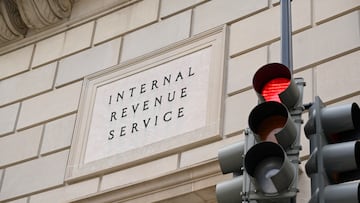Requirements to receive up to $2,000 for the Saver’s Tax Credit: who can request it?
Those looking to save for retirement won’t want to miss out on the Savers Tax Credit which could qualify you for a $2,000 reduction in tax liability.

The IRS is rolling up its sleeves to process 2023 tax returns with tax season kicking off 29 January this year. American taxpayers before submitting there filings should take a minute to check out the multiple tax credits that are available to them.
One of these that is overlooked by many is the Retirement Savings Contributions Credit, otherwise known as the Saver’s Credit. This is related to retirement accounts such as the 401(k) and the Roth plans.
This provision helps taxpayers who have moderate incomes to contribute to their retirement plans. In this case, they can deduct up to $2,000 from their tax liability for the year while at the same time building their nest egg.
The requirements to qualify for the credit
According to the IRS, the taxpayer who requests the Savers Tax Credit must:
- Be 18 years old or older
- Not be considered as a dependent in the tax declaration of another person
- not be a students on eligible expenses.
A person is considered a student if:
- Was enrolled for a full course in an educational center,
- Completed a full-time training course that took place on a farm offered by a school, state, county, or local government agency.
How much can you receive?
Depending on your adjusted gross income reported on your Form 1040 series return, the amount of the credit is 50%, 20% or 10% of your retirement plan. Therefore, $1,000 is the most that can be received unless you are filing jointly. $2,000 is the most that can be received for joint filers.
Refundable or non-refundable credits
The Saver’s Credit is a non-refundable credit, which means that it will reduce your tax liability dollar for dollar but anything in excess of what you owe will not be added to your refund, if any.
On the other hand, any amount that you can claim from a refundable tax credit that exceeds your tax liability will get added onto your refund if you have one coming. Some credits are only partially refundable, which means that one part is refundable while the other is not.
The Saver’s Credit can help bring your retirement goals a little closer. See #IRS details at https://t.co/k9Qa79uyJX pic.twitter.com/3sUItMfQhR
— IRSnews (@IRSnews) January 22, 2024
Valuable refundable tax credits for taxpayers
While the Saver’s Credit is non-refundable, there are some very valuable refundable tax credits that Americans may qualify for that could be worth thousands of dollars. The following two can both be claimed together.
Earned Income Tax Credit (EITC)
EITC recipients can receive up to $7,430 on their 2023 tax returns. However, the exact amount will depend on the situation of each family or individual applying, such as the number of children one has or annual income.
Child Tax Credit (CTC)
Related stories
The current state of what the Child Tax Credit for the 2023 tax year is in limbo as Congress works out a new expansion of this provision. The credit was greatly expanded in 2021, but only for one year. It’s worth noting that those who could’ve claimed it but still haven’t might possibly still be able to. Qualifying taxpayers have up to three years to claim a tax refund that they never received. However, below are the current provisions of the credit.
Taxpayers that meet the requirements with eligible children in 2023 can claim a credit worth up to $2,000 per child. This year the credit is partially refundable, and there is an earnings threshold to start claiming the up to $1,600 portion known as the “Additional Child Tax Credit.”

